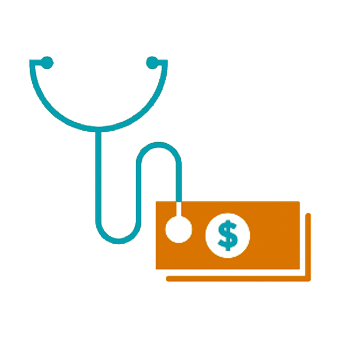On April 10, 2024, Hilltop Deputy Director Alice Middleton was one of three speakers at a session of the University of Baltimore-sponsored Rosenberg Dialogue Series, titled Fixing Unintended Pandemic Medicaid Policy Consequences: Lessons Learned and Insurance Coverage Implications for Recipients. In the session, speakers discussed the national context and state variations in qualifying disenrolled persons for coverage, Maryland Medicaid experiences with this policy complication for continuous enrollment, and generating data and information for evidence-based decisions.
As Mississippi is actively considering expanding its Medicaid program, Hilltop created this informational brief to capture key facts regarding Medicaid policy options as they apply to a potential Medicaid expansion in Mississippi.
As Mississippi is actively considering expanding its Medicaid program, Hilltop created this informational brief to capture key facts regarding Medicaid work requirements as they apply to a potential Medicaid expansion in Mississippi.
Medicaid enrollments typically reflect programmatic factors (such as eligibility thresholds or outreach efforts) and underlying economic factors (such as recessions). As Mississippi is actively considering expanding its Medicaid program, The Hilltop Institute assembled publicly available Medicaid enrollment trend data from another state (Louisiana) to show its expansion enrollment over time.
Hilltop Principal Data Scientist Morgan Henderson, PhD, and Executive Director Cynthia Woodcock, MBA, presented Hilltop research to the Mississippi House Medicaid Committee. The research – a 2021 economic analysis of Medicaid expansion in Mississippi – was commissioned by the Center for Mississippi Health Policy, a nonprofit, non-partisan organization.
This report describes the services The Hilltop Institute provided to the Maryland Department of Health (MDH) under the Master Agreement between Hilltop and MDH. The report covers fiscal year (FY) 2023 (July 1, 2022, through June 30, 2023). Hilltop’s interdisciplinary staff provided a wide range of services, including Medicaid program development and policy analysis; HealthChoice program support, evaluation, and financial analysis; long-term services and supports program development, policy analysis, and financial analytics; and data management and web-accessible database development.
How well do US hospitals’ online prices posted for shoppable services correlate with their prices for the same service obtained via the telephone? In this cross-sectional study of 60 US hospitals, online and phone cash prices were poorly correlated within a given hospital for vaginal childbirth. These findings suggest that at US hospitals, price estimates for shoppable services posted online correlate poorly with prices obtained via phone; these findings suggest that patients will continue to face barriers to comparison shopping.
In 1997, Maryland implemented HealthChoice—a statewide mandatory Medicaid and Children’s Health Insurance Program (CHIP) managed care program—under authority of a waiver through §1115 of the Social Security Act. The provisions of the Affordable Care Act (ACA) that went into effect in 2014 marked another milestone by extending quality coverage to many more Marylanders with low income. Over 20 years after its launch, HealthChoice covers close to 90% of the state’s Medicaid and Maryland Children’s Health Program (MCHP) populations. Since the inception of HealthChoice, the Maryland Department of Health (MDH) has requested and received seven §1115 waiver renewals.
The Hilltop Institute, on behalf of MDH, evaluates the program annually; this evaluation covers the period from CY 2017 through CY 2021.
Principal Policy Analyst Dolapo Fakeye, PhD, gave this podium presentation at the 2023 AcademyHealth Annual Research Meeting (ARM) held June 24-27, 2023, in Seattle.
This report describes the services The Hilltop Institute provided to the Maryland Department of Health (the Department) under the Master Agreement between Hilltop and the Department. The report covers fiscal year (FY) 2022 (July 1, 2021, through June 30, 2022). Hilltop’s interdisciplinary staff provided a wide range of services, including Medicaid program development and policy analysis; HealthChoice program support, evaluation, and financial analysis; long-term services and supports program development, policy analysis, and financial analytics; and data management and web-accessible database development.





